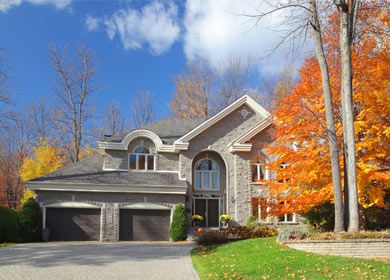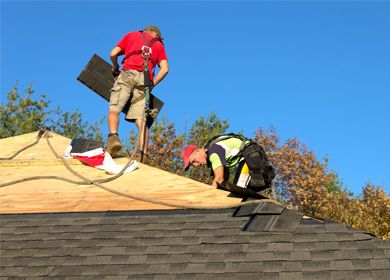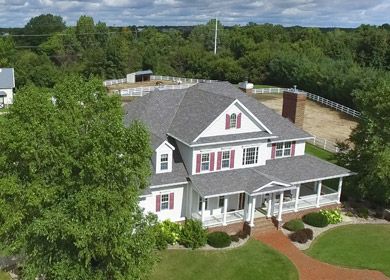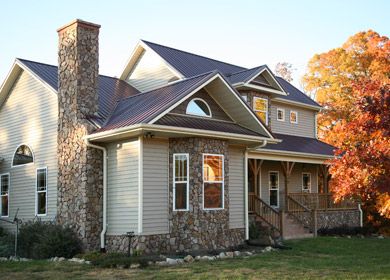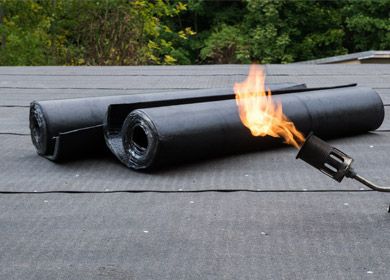Roofing Shingles
Choosing the right roof shingles to accommodate your needs may take some research but it is definitely worth looking in to. It could save you money down the road! Whether you choose BP, CertainTeed, Malarkey, Owens Corning or IKO shingles you surely won’t be disappointed with the result! All of these products are of the utmost quality and have been manufactured to last.
It's important to note that your roofing contractor may know how to shingle a roof, but the choice of roofing shingles is up to you!
So you’re probably wondering ‘What are my options?’…
Asphalt shingles are definitely among the most popular options for a sloping roof and that is why so many companies have chosen to offer them. From IKO Cambridge shingles, bp mystique to landmark shingles, the list goes on. When selecting shingles, it's not just about what would look best aesthetically, it's also important to check for ventilation, durability, and warranty.
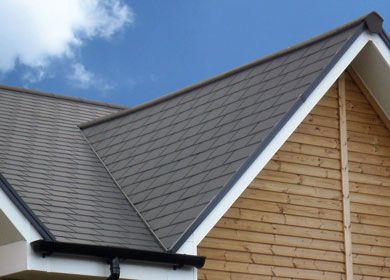
These are the things that will matter most to you years down the road should any problems arise from wear and tear. There are also additions you can make that can extend the life of your roof such as EPDM roofing, a special protectant for flat roofs. Options like those are good to explore depending on your specific roofing needs.
Living in Ottawa can definitely have its weather challenges, the harsh elements make it so roofs in Ottawa take a lot of damage! From snow to hail to record rainfalls, we see it all. Speaking of which, it is very important that your shingles work together with the eavestroughs, roof flashing, and roof vents to act as an ice and water shield for your home. This can avoid expensive repairs down the road to your attic, ceilings, etc. Experienced roofers such as ourselves can help design the ideal roof for all your needs. We are experts when it comes to roofing in Ottawa and we are proud of it!
So, if you’re done with small roof repair and ready to replace, then it's time to call your Ottawa roofing contractors - we’ve got everything you need.
The following is a breakdown of a basic asphalt roofing system.
Ice and water shield is probably the most important aspect of the roofing system. It is a synthetic, impermeable membrane that adheres to the roof deck. It is composed of tar and usually some form of rubber. It reseals any nails that penetrate through and ensures a complete seal wherever it is installed.
Vexillum Roofing always installs a minimum of six feet of ice and water shied from the bottom eave of the roof, ice and water shield under all valley flashing, wall flashing around all skylights as well as in any areas that see significant snow and ice buildup.
Ice and watershield being installed
This is a new product. It is essentially a synthetic tarp like material that is used instead of felt paper.
After the installation of ice and water shield, Vexillum Roofing always installs the minimum of 15 lb. felt paper on the balance of the roof. This ensures that the entire roof is covered in one form of underlay or another.
Valleys are areas where there is the largest amount of water buildup. For this reason it is important to ensure that they are well flashed.
Note: Most asphalt shingle manufacturers have one of each of these styles of shingles, though some are not available in certain regions.
A. 3-Tab or Traditional:
Three tab shingles were once the mainstay of the roofing industry though they are slowly being replaced by the architectural style. Many in the industry believe that within a few years this style will be phased out.
B. Architectural:
These shingles have quickly become the dominant style in the industry. They are slightly more expensive than the traditional shingles, but offer a much longer life span and a greater warranty.
*CONSIDERED BEST VALUE*
C. Architectural SBS:
Though SBS shingles have been around for a long time, the product is only now coming to the forefront. They are made from the same materials that are used in torch-on application roofing systems, they are far more durable, and may prove to have a much longer life than other architectural shingles. They do, however, come at a premium price.
D. Premium:
Premium or designer shingles are where we lump the rest of the asphalt roofing industries shingle products. There are countless designer shingles across every brand. They offer a myriad of styles, and distinctive features that can make any house look unique. Links to all manufacturers’ premium shingles are available on their individual product pages. Feel free to browse.
Traditional shingle: cambridge shingles: One type of premium shingle: Crownslate
Wall flashing comes in an array of sizes and colours. They are usually shaped in as an L and either bent at a 90 or 45 degree angle with another drip angle on the lower edge. These are installed anywhere a roof meets a wall, chimney or some other form of obstacle that does not come with its own form of flashing, such as a skylight. Underneath wall flashing we install step flashing. These are small pieces of metal, again bent in an L that ensures water cannot circumvent the edges of the shingles. (See Photos)
Venting is also very important to the roofing system. Adequate venting ensures that heat and moisture does not build up in the attic area. The venting system is composed of the input vents, found in the vented soffit under the bottom eave of the roof, and the exhaust vents at the top of the roof. There are several different styles of vent such as pergola vents, mushroom vents or ridge vents. All of these offer different styles and venting capacity.
Also important to note: bathroom and kitchen exhaust fans are required to be vented outside the home and not into the attic. They require their own style of vents called clampet vents or goose necks. These vents are made with a flap on the interior to stop any exterior air from entering the home.
I'm sold
Roofing Services
Find the Best Profesional
Top Menu
- ON
- Ajax
- Barrie
- Belleville
- Brampton
- Burlington
- Cambridge
- Carp
- Cornwall
- Etobicoke
- Guelph
- Hamilton
- Kanata
- Air Conditioner Maintenance Kanata
- Air Conditioner Repair Kanata
- Air Conditioning Installation Kanata
- Boxing Kanata
- Brazilian Jiu Jitsu (BJJ) Kanata
- Commercial Roofing Kanata
- Criminal Lawyer Kanata
- Flat Roofing Kanata
- Furnace Installation Kanata
- Furnace Maintenance Kanata
- Furnace Repair Kanata
- HVAC Kanata
- Karate for Kids Kanata
- Karate Kanata
- Kickboxing Kanata
- Kids Brazilian Jiu Jitsu (BJJ) Kanata
- Kids Martial Arts Kanata
- Lawyer Kanata
- Martial Arts For Women Kanata
- Martial Arts Kanata
- Metal Roofing Kanata
- MMA Kanata
- Muay Thai Kanata
- Roof Repair Kanata
- Roof Replacement Kanata
- Roofing Contractors Kanata
- Roofing Shingles Kanata
- Self Defense Kanata
- SEO Kanata
- Siding Contractors Kanata
- Taekwondo Kanata
- Taekwondo Kids Kanata
- Web Design Kanata
- Windows And Doors Kanata
- Kingston
- Kitchener
- London
- Markham
- Mississauga
- Oakville
- Orleans
- Air Conditioner Maintenance Orleans
- Air Conditioner Repair Orleans
- Air Conditioning Installation Orleans
- Boxing Orleans
- Brazilian Jiu Jitsu (BJJ) Orleans
- Commercial Roofing Orleans
- Criminal Lawyer Orleans
- Flat Roofing Orleans
- Furnace Installation Orleans
- Furnace Maintenance Orleans
- Furnace Repair Orleans
- HVAC Orleans
- Karate for Kids Orleans
- Karate Orleans
- Kickboxing Orleans
- Kids Brazilian Jiu Jitsu (BJJ) Orleans
- Kids Martial Arts Orleans
- Lawyer Orleans
- Martial Arts For Women Orleans
- Martial Arts Orleans
- Metal Roofing Orleans
- MMA Orleans
- Muay Thai Orleans
- Roof Repair Orleans
- Roof Replacement Orleans
- Roofing Contractors Orleans
- Roofing Shingles Orleans
- Self Defense Orleans
- SEO Orleans
- Siding Contractors Orleans
- Taekwondo Kids Orleans
- Taekwondo Orleans
- Web Design Orleans
- Windows And Doors Orleans
- Oshawa
- Ottawa
- Air Conditioner Maintenance Ottawa
- Air Conditioner Repair Ottawa
- Air Conditioning Installation Ottawa
- Boxing Ottawa
- Brazilian Jiu Jitsu (BJJ) Ottawa
- Commercial Roofing Ottawa
- Criminal Lawyer Ottawa
- Flat Roofing Ottawa
- Furnace Installation Ottawa
- Furnace Maintenance Ottawa
- Furnace Repair Ottawa
- HVAC Ottawa
- Karate for Kids Ottawa
- Karate Ottawa
- Kickboxing Ottawa
- Kids Brazilian Jiu Jitsu (BJJ) Ottawa
- Kids Martial Arts Ottawa
- Lawyer Ottawa
- Martial Arts For Women Ottawa
- Martial Arts Ottawa
- Metal Roofing Ottawa
- MMA Ottawa
- Muay Thai Ottawa
- Roof Repair Ottawa
- Roof Replacement Ottawa
- Roofing Contractors Ottawa
- Roofing Shingles Ottawa
- Self Defense Ottawa
- SEO Ottawa
- Siding Contractors Ottawa
- Taekwondo Kids Ottawa
- Taekwondo Ottawa
- Web Design Ottawa
- Windows And Doors Ottawa
- Richmond Hill ON
- Scarborough
- Toronto
- Air Conditioner Maintenance Toronto
- Air Conditioner Repair Toronto
- Air Conditioning Installation Toronto
- Boxing Toronto
- Brazilian Jiu Jitsu (BJJ) Toronto
- Commercial Roofing Toronto
- Criminal Lawyer Toronto
- Flat Roofing Toronto
- Furnace Installation Toronto
- Furnace Maintenance Toronto
- Furnace Repair Toronto
- HVAC Toronto
- Karate for Kids Toronto
- Karate Toronto
- Kickboxing Toronto
- Kids Brazilian Jiu Jitsu (BJJ) Toronto
- Kids Martial Arts Toronto
- Lawyer Toronto
- Martial Arts For Women Toronto
- Martial Arts Toronto
- Metal Roofing Toronto
- MMA Toronto
- Muay Thai Toronto
- Roof Repair Toronto
- Roof Replacement Toronto
- Roofing Contractors Toronto
- Roofing Shingles Toronto
- Self Defense Toronto
- SEO Toronto
- Siding Contractors Toronto
- Taekwondo Kids Toronto
- Taekwondo Toronto
- Web Design Toronto
- Windows And Doors Toronto
- Vaughan
- Waterloo
- Whitby
- Windsor
- Stittsville
- Manotick
- Barrhaven
- Metcalfe
- Nepean
- Carleton Place
- Arnprior
- Kemptville
- QC
- Gatineau
- Montreal
- Air Conditioner Maintenance Montreal
- Air Conditioner Repair Montreal
- Air Conditioning Installation Montreal
- Boxing Montreal
- Brazilian Jiu Jitsu (BJJ) Montreal
- Commercial Roofing Montreal
- Criminal Lawyer Montreal
- Flat Roofing Montreal
- Furnace Installation Montreal
- Furnace Maintenance Montreal
- Furnace Repair Montreal
- HVAC Montreal
- Karate for Kids Montreal
- Karate Montreal
- Kickboxing Montreal
- Kids Brazilian Jiu Jitsu (BJJ) Montreal
- Kids Martial Arts Montreal
- Lawyer Montreal
- Martial Arts For Women Montreal
- Martial Arts Montreal
- Metal Roofing Montreal
- MMA Montreal
- Muay Thai Montreal
- Roof Repair Montreal
- Roof Replacement Montreal
- Roofing Contractors Montreal
- Roofing Shingles Montreal
- Self Defense Montreal
- SEO Montreal
- Siding Contractors Montreal
- Taekwondo Kids Montreal
- Taekwondo Montreal
- Web Design Montreal
- Windows And Doors Montreal
- Laval
- Longueuil
- AB
- MB
- BC
- SK
- NS






